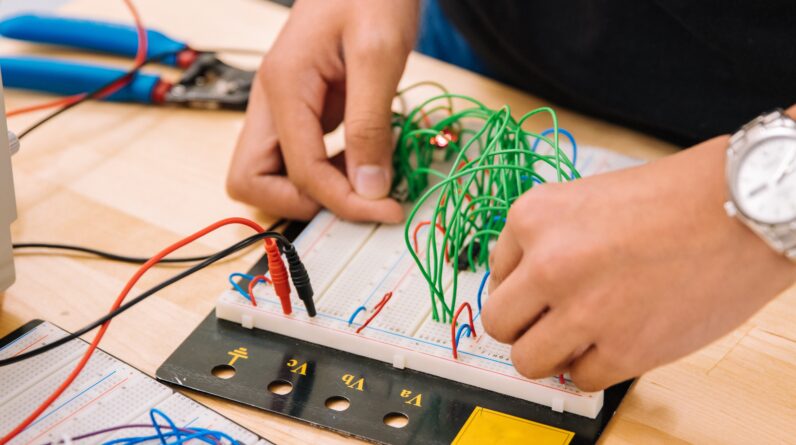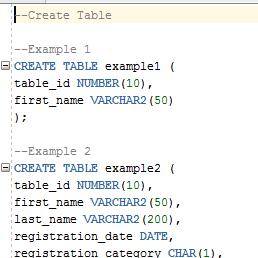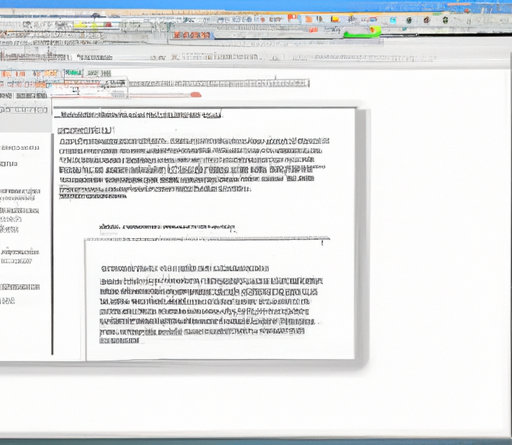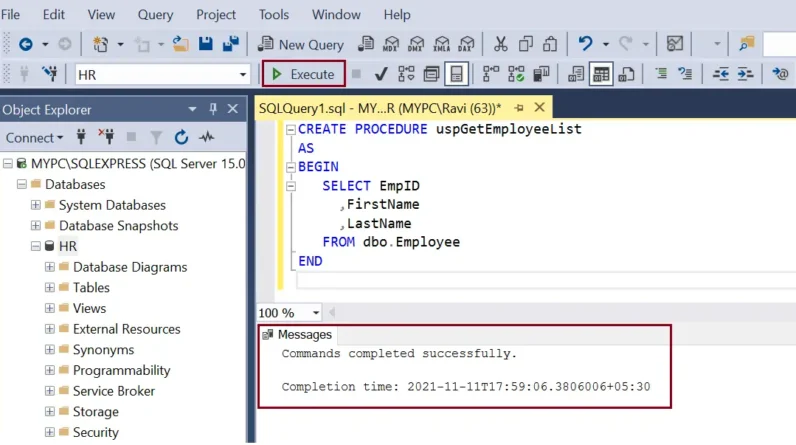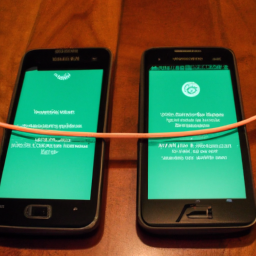
In this article, we’re going to discuss how you can easily share files from your Android device to an iPhone. We’ll walk you through some simple step-by-step tutorials to help you understand the process better. Additionally, we’ll explore the feature of “nearby share” that allows you to quickly transfer files between Android and iPhone devices. By the end of this article, you’ll be equipped with the knowledge and know-how to effortlessly share files between your Android and iPhone devices. Let’s get started!
Table of Contents
How to Share Files from Android to iPhone
In today’s digital age, file sharing has become an essential part of our daily lives. Whether it’s sharing photos, videos, or documents, we rely on file sharing to stay connected and collaborate with others. However, when it comes to sharing files between different platforms, such as Android and iPhone, it can often be a challenge. In this guide, we will explore various methods and techniques that will help you effortlessly share files from your Android device to an iPhone.
Importance of File Sharing
Before we delve into the different file sharing methods, let’s first understand the importance of file sharing. File sharing allows us to easily exchange information with others, whether it’s for work or personal purposes. It enables collaboration, enhances productivity, and fosters communication between individuals or teams. sharing files between Android and iPhone devices is particularly crucial as these two platforms dominate the smartphone market, and ensuring compatibility and seamless file transfer is essential for users.
Different File Sharing Methods
There are several ways to share files between Android and iPhone devices. Each method offers its own set of advantages and challenges. Let’s explore some of the most common file sharing methods:
1. Exploring the Nearby Share Feature
Introduction to Nearby Share
One of the most convenient and straightforward methods to share files between Android and iPhone devices is by using the Nearby Share feature. Essentially, Nearby Share is a wireless file sharing feature built into both Android and iPhone devices, allowing users to share files quickly and easily. It utilizes Bluetooth and Wi-Fi Direct technology to establish a connection for file transfer.
Activating Nearby Share on Android
To activate Nearby Share on your Android device, follow these steps:
- Open the Settings app on your Android device.
- Scroll down and select “Google.”
- Tap on “Device Connections.”
- Look for “Nearby Share” and tap on it.
- Toggle the switch to enable Nearby Share.
Activating Nearby Share on iPhone
On the other hand, activating Nearby Share on your iPhone requires a slightly different approach. Currently, iPhones do not have a native feature like Nearby Share. However, you can use third-party apps to achieve a similar functionality. Some popular apps include SHAREit, Xender, and Zapya. Download and install one of these apps from the App Store to your iPhone and follow the instructions provided.
2. Using Bluetooth for File Transfer
Enabling Bluetooth on Android
Bluetooth is a widely used wireless technology that enables communication between devices. To enable Bluetooth on your Android device, follow these steps:
- Open the Settings app on your Android device.
- Scroll down and tap on “Connected devices” or a similar option.
- Select “Bluetooth” and toggle it on.
Enabling Bluetooth on iPhone
Enabling Bluetooth on an iPhone is also straightforward. Here’s how:
- Open the Settings app on your iPhone.
- Scroll down and tap on “Bluetooth.”
- Toggle the switch to turn on Bluetooth.
Pairing Android and iPhone via Bluetooth
Once Bluetooth is enabled on both devices, you need to pair them to initiate the file transfer. Here’s how you can do it:
- On your Android device, go to the Bluetooth settings and tap on “Pair new device.”
- Your Android device will then search for available devices nearby. Select your iPhone from the list.
- You may need to confirm the pairing on both devices by entering a PIN or tapping on “Confirm” or “Pair.”
- Once the devices are paired, you can proceed with file sharing.
Transferring Files via Bluetooth
After pairing the Android and iPhone devices, you can start transferring files. Follow these steps:
- Open the file manager or gallery app on your Android device.
- Select the file(s) you want to transfer and tap on the share icon.
- From the sharing options, choose Bluetooth.
- A list of nearby Bluetooth devices will appear. Select your paired iPhone.
- On your iPhone, you will receive a notification prompting you to accept the file transfer. Tap on “Accept” or “Allow” to proceed.
- The file transfer will begin, and once completed, the file(s) will be accessible on your iPhone.
3. Transfer Files Using Cloud Storage Services
Choosing a Suitable Cloud Storage Service
Cloud storage services offer a convenient way to store and share files across multiple platforms. There are several popular cloud storage services available, such as Google Drive, Dropbox, and OneDrive. Choose a cloud storage service that is compatible with both Android and iPhone devices.
Uploading Files from Android to the Cloud
To transfer files from your Android device to the cloud, follow these steps:
- Install the cloud storage app on your Android device.
- Open the app and sign in to your account or create a new one.
- Navigate to the location of the files you want to upload.
- Select the files and tap on the upload icon.
- Choose the cloud storage service as the destination and confirm the upload.
Downloading Files from the Cloud to iPhone
Once the files are uploaded to the cloud, you can easily access and download them on your iPhone. Here’s how:
- Install the cloud storage app on your iPhone.
- Sign in to your account using the same credentials.
- Locate the files you want to download.
- Select the files and tap on the download icon.
- The files will be downloaded to your iPhone and accessible from the app.
4. Utilizing Third-Party File Transfer Apps
Researching Reliable File Transfer Apps
Third-party file transfer apps can provide additional features and functionalities for sharing files between Android and iPhone devices. Conduct thorough research and read user reviews to find a reliable app that meets your requirements. Some popular options include AirDroid, Feem, and Send Anywhere.
Downloading and Installing a File Transfer App on Android
To use a third-party file transfer app, follow these steps:
- Go to the Google Play Store on your Android device.
- Search for the file transfer app you want to use.
- Tap on the app’s icon, then select “Install.”
- Wait for the app to download and install on your device.
Downloading and Installing a File Transfer App on iPhone
Here’s how you can download and install a file transfer app on your iPhone:
- Open the App Store on your iPhone.
- Search for the file transfer app you wish to use.
- Tap on the app’s icon, then select “Get” or “Install.”
- Provide your Apple ID or use Touch ID/Face ID to confirm the download and installation.
Transferring Files Using the App
Once the file transfer app is installed on both devices, follow the app-specific instructions to transfer files. Most apps will require you to establish a connection between the Android and iPhone devices, either through scanning a QR code or entering a unique code provided by the app. Once connected, you can browse and transfer files between the two devices seamlessly.
5. Emailing Files from Android to iPhone
Composing an Email on Android
Emailing files is a widely used method for sharing files across different platforms. To email files from your Android device to an iPhone, follow these steps:
- Open the email app on your Android device.
- Tap on the compose or new email icon to start a new email.
- Enter the recipient’s email address in the “To” field.
- Add a subject line and compose your email message.
Attaching Files to the Email
To attach files to the email, follow these steps:
- Tap on the attachment icon. It usually looks like a paperclip.
- Locate the files you want to attach and select them.
- Once the files are selected, tap on the “Attach” or “Insert” button.
Sending the Email
After attaching the files, you can send the email by following these steps:
- Review your email for accuracy.
- Tap on the send icon or “Send” button to send the email.
- The email, along with the attached files, will be sent to the recipient.
Accessing the Email and Downloading Files on iPhone
To access the email and download files on your iPhone, follow these steps:
- Open the email app on your iPhone.
- Locate the email you sent from your Android device.
- Tap on the email to open it.
- Review the contents of the email and tap on the attached file(s) to download and save them to your iPhone.
6. Using Messaging Apps for File Sharing
Finding a Suitable Messaging App
Messaging apps have evolved beyond text-based communication and now offer the ability to share files as well. To find a suitable messaging app for file sharing, consider popular options such as WhatsApp, Telegram, or Facebook Messenger. Install the chosen app on both your Android and iPhone devices.
Installing the Messaging App on Android
To install a messaging app on your Android device, follow these steps:
- Open the Google Play Store on your Android device.
- Search for the messaging app you want to use.
- Tap on the app’s icon, then select “Install.”
- Wait for the app to download and install on your device.
Installing the Messaging App on iPhone
Here’s how you can install a messaging app on your iPhone:
- Open the App Store on your iPhone.
- Search for the messaging app you wish to use.
- Tap on the app’s icon, then select “Get” or “Install.”
- Provide your Apple ID or use Touch ID/Face ID to confirm the download and installation.
Sending Files Through the Messaging App
Once the messaging app is installed on both devices, follow these steps to send files:
- Open the messaging app on your Android device.
- Select the contact or group you want to send files to.
- Tap on the attachment or file-sharing icon.
- Locate the files you want to share on your Android device.
- Select the files and tap on “Send” or a similar option.
- The files will be sent to the recipient(s) and accessible on their iPhone within the messaging app.
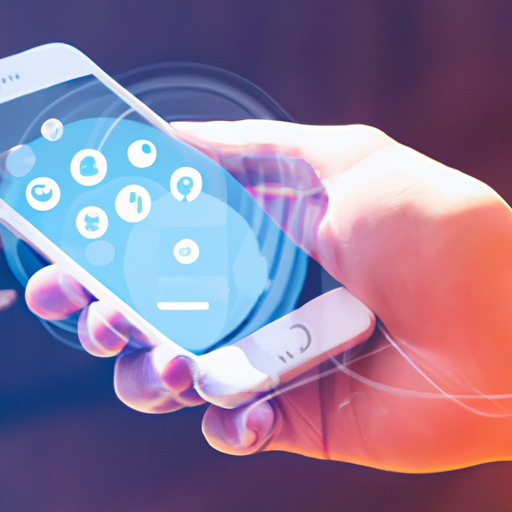
7. Transferring Files Using a USB Cable
Connecting Android and iPhone with a USB Cable
Transferring files directly between Android and iPhone devices using a USB cable can be a convenient option. However, it’s essential to note that this method may have limitations due to platform restrictions. Nevertheless, to establish a physical connection between the devices, follow these steps:
- Purchase a suitable USB cable that is compatible with both your Android and iPhone devices. It should typically have a USB Type-C or micro-USB connector for Android and a Lightning connector for iPhone.
- Connect one end of the USB cable to your Android device.
- Connect the other end of the USB cable to the iPhone using a Lightning to USB adapter.
Enabling File Transfer Mode
After connecting the devices, you may need to adjust the settings on your Android device to enable file transfer mode. Here’s how:
- On your Android device, swipe down from the top of the screen to access the notification panel.
- Tap on the USB notification or “USB options” (may vary depending on the device).
- Select the file transfer or “Transfer files” option.
Transferring Files Directly
Once the devices are connected and file transfer mode is enabled, you can proceed with transferring files directly. Follow these steps:
- Open the file manager or gallery app on your Android device.
- Select the file(s) you want to transfer.
- Copy or cut the selected file(s).
- Navigate to the desired location on your iPhone where you want to transfer the files.
- Paste the file(s) from the Android device to the iPhone.
8. Share Files Wirelessly Using Wi-Fi Direct
Enabling Wi-Fi Direct on Android
Wi-Fi Direct is a peer-to-peer wireless technology that allows devices to connect and share files without the need for a traditional Wi-Fi network. To enable Wi-Fi Direct on your Android device, follow these steps:
- Open the Settings app on your Android device.
- Scroll down and tap on “Wi-Fi” or a similar option.
- Look for “Wi-Fi Direct” and tap on it.
- Toggle the switch to enable Wi-Fi Direct.
Enabling Wi-Fi Direct on iPhone
On an iPhone, the Wi-Fi Direct functionality is not available natively. However, you can achieve a similar wireless file sharing capability using third-party apps like Feem or ShareIt. Download and install one of these apps from the App Store, and follow the specific instructions provided by the app to enable Wi-Fi Direct-like functionality.
Establishing a Connection
Once Wi-Fi Direct is enabled on your Android device, follow these steps to establish a connection with your iPhone:
- On your Android device, open the Wi-Fi settings.
- Look for the Wi-Fi Direct network and tap on it.
- On your iPhone, go to the Wi-Fi settings and connect to the Wi-Fi Direct network.
Transferring Files Wirelessly
Once the devices are connected via Wi-Fi Direct, you can start transferring files wirelessly. Follow these steps:
- Open the file manager or gallery app on your Android device.
- Select the file(s) you want to transfer.
- Tap on the share icon and choose the Wi-Fi Direct or similarly named option.
- On your iPhone, you will receive a notification prompting you to accept the file transfer. Tap on “Accept” or “Allow” to proceed.
- The file transfer will begin, and once completed, the file(s) will be accessible on your iPhone.

9. Conclusion
In conclusion, sharing files from your Android device to an iPhone is no longer a challenging task. With a variety of methods available, such as Nearby Share, Bluetooth, cloud storage services, third-party file transfer apps, emailing, messaging apps, USB cable, and Wi-Fi Direct, you have numerous options to choose from. Consider the nature of your files, the ease of use, and the convenience of each method when deciding on the most suitable approach.
By following the outlined methods and techniques, you can effortlessly transfer files between your Android and iPhone, ensuring seamless compatibility and efficient collaboration. Embrace the power of file sharing and stay connected with your friends, family, and colleagues, regardless of the smartphones they use.
Remember to choose the method that best fits your specific needs and preferences, and always prioritize the security and integrity of your files during the transfer process. With these tips and techniques at your disposal, you can confidently and safely share files between your Android and iPhone devices.





